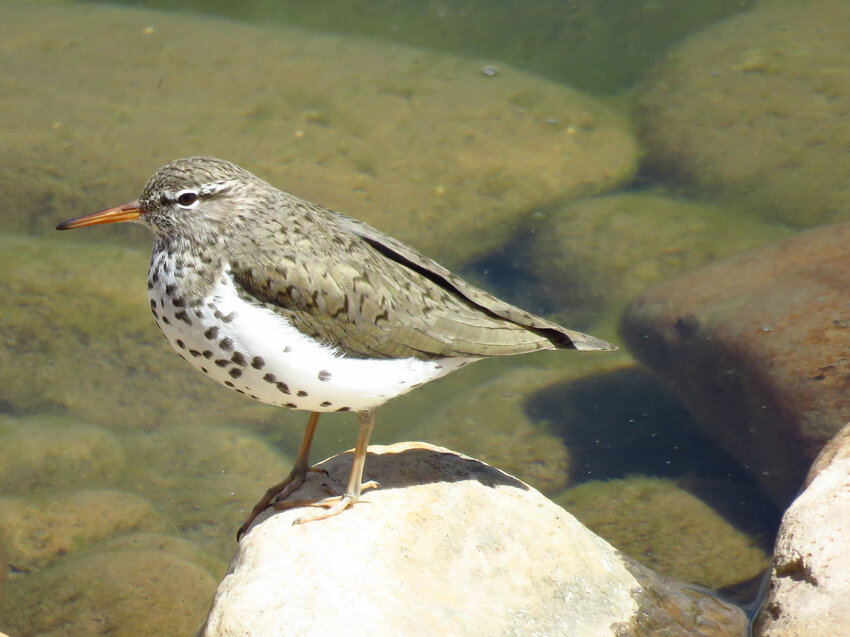
Photo courtesy Charles Martinez
This week’s Bird of the Week, compliments of the Weminuche Audubon Society and Audubon Rockies, is the spotted sandpiper.
In spotted sandpipers, the roles of the sexes in reproduction is the reverse of what we normally see in birds. Hormonal changes play a part, with the testosterone level of females increasing by a factor of seven during breeding season. The female arrives first on the breeding grounds and establishes a territory by chasing away other females.
When males arrive, it is the female who performs courtship displays and chooses a mate. Nest building is an important part of courtship behavior and a pair may leave several nests incomplete before finishing the one they will use. Once the eggs are laid, the female leaves the male to incubate and raise the chicks.
In a practice termed polyandry, the female may mate with up to four males, each of whom she leaves to raise her young. Since she has the ability to store sperm for up to a month, this practice may result in a male incubating eggs fertilized by someone else.
Spotted sandpipers breed all across North America, even at high elevations, near almost any freshwater type. They are robin-sized with an olive-brown back and white belly which is covered with dark spots in breeding plumage. Seldom seen in flocks, each walks along the shoreline, constantly bobbing its rear half up and down.
They are active foragers who mainly catch small invertebrates by probing in the mud, skimming from the water’s surface, gleaning insects from plants or snatching them from the air.
Before winter, these birds migrate as far south as Central and South America. Often traveling singly, juveniles are the last to leave breeding grounds and somehow find their way to a place they’ve never been.
For information on events, visit, www.weminucheaudubon.org and www.facebook.com/weminucheaudubon/.